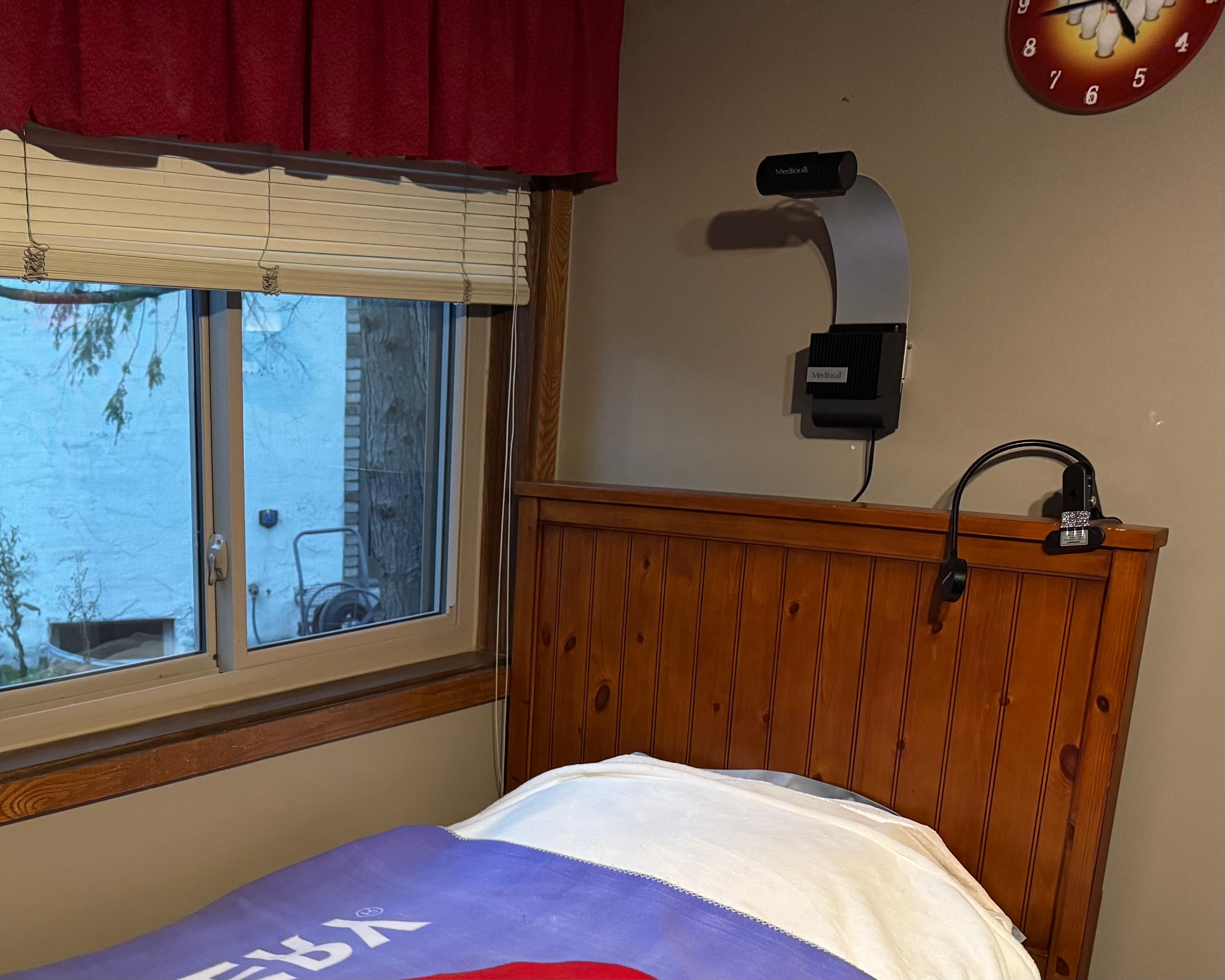From Research to Reality:
Sleep & Safety
Pilot Program
Our groundbreaking Sleep & Safety Study has concluded, yielding valuable insights into thermal sensor technology for nighttime monitoring. Now, we're launching an exciting pilot program to test enhanced solutions in real-world settings for individuals with developmental disabilities and complex needs, prioritizing remote monitoring safety.
Completed Research - Sleep & Safety Study Outcomes
Funded by the Ohio Department of Developmental Disabilities (DODD), our study explored thermal sensor technology for monitoring sleep patterns in individuals with developmental disabilities. While experimental, it gathered crucial data on nighttime safety, informing future innovations in remote support.
- Key Insights Identified patterns in sleep disturbances and potential early detection of health risks like seizures or respiratory issues.
- Participant Impact Volunteers contributed annotations that trained models, advancing person-centered care technology.
- Next Steps Data analysis continues to refine algorithms, directly feeding into our new pilot program.
New Initiative - Sleep & Safety Pilot Program
Building on study findings, this pilot tests an improved thermal sensor system for remote monitoring in home and supported living environments. Participants will receive equipment, training, and ongoing support to evaluate enhanced safety and independence, with a focus on responsible implementation.
Key features include privacy-focused thermal imaging, customizable monitoring, and integration with existing care workflows—aligned with DODD's Technology First guidelines.
- Pilot Duration 6-12 months, starting September 2025, with potential for extension based on results.
- What You'll Get Free sensor equipment, companion app access, weekly check-ins, and data insights reports.
- Eligibility Individuals with DD, complex needs (e.g., seizures, sleep issues), or HCBS recipients; agencies welcome.
- How to Join Submit interest form; we'll review and onboard qualified participants.
Benefits - Why Participate in the Pilot?
Help shape the next generation of care technology while gaining early access to potential safety enhancements.
- Real-World Testing: Contribute to improvements for better nighttime monitoring.
- Enhanced Independence: Explore tools that could allow safer home living.
- Community Impact: Advance solutions for the broader DD community in Ohio.
Pilot Details - What to Expect in the Program
The pilot runs through 2026, with weekly feedback sessions under 1 hour. Equipment provided at no cost.





- Duration: 6-12 months of active testing and feedback.
- Tasks: Weekly data reviews and annotations via app; optional virtual check-ins.
- Support: Dedicated onboarding, technical help, and privacy controls.
- Deadlines: Applications open until October 31, 2025; limited spots available.
Responsible Development - Our Phased Approach to Innovation
Committed to safe, ethical implementation, we're prioritizing remote monitoring safety in this pilot. By mid-2026, we'll gradually enable live notifications for remote monitoring personnel. Once thoroughly tested and proven in multiple settings, we'll roll out advanced detection features—ensuring responsible use of technology for better care outcomes.
Program Guidelines - Pilot Terms & Conditions
Important details for participants:
- Research Status: Pilot is pre-commercial; not FDA-approved. Focus on testing and feedback.
- Data Privacy: Thermal data collected with consent; privacy shutter available. Compliant with HIPAA and DODD standards.
- Equipment: Provided free; must be returned if participation ends early.
- Commitment: Regular feedback required; inconsistent participation may lead to removal.
- Withdrawal: Possible at any time with equipment return.
Frequently Asked - Pilot Program Questions
- How does the pilot differ from the study? The pilot builds on study data with remote monitoring features, focusing on practical application and safety.
- Is there cost involved? No, all equipment and support provided free during the pilot.
- What privacy measures are in place? Thermal-only data, privacy shutter, and secure, encrypted storage.
- Can agencies participate? Yes, we welcome care providers to pilot in supported living settings.
- What if I need technical help? 24/7 support line and virtual training sessions available.
- Will this replace caregivers? No, it's designed to complement existing support for added safety.
Apply for the Pilot Program
The Sleep & Safety Study has concluded. To participate going forward, please complete this accessible application form. All fields marked with * are required. We've designed this form for ease of use, with clear labels, keyboard navigation support, and simple language.